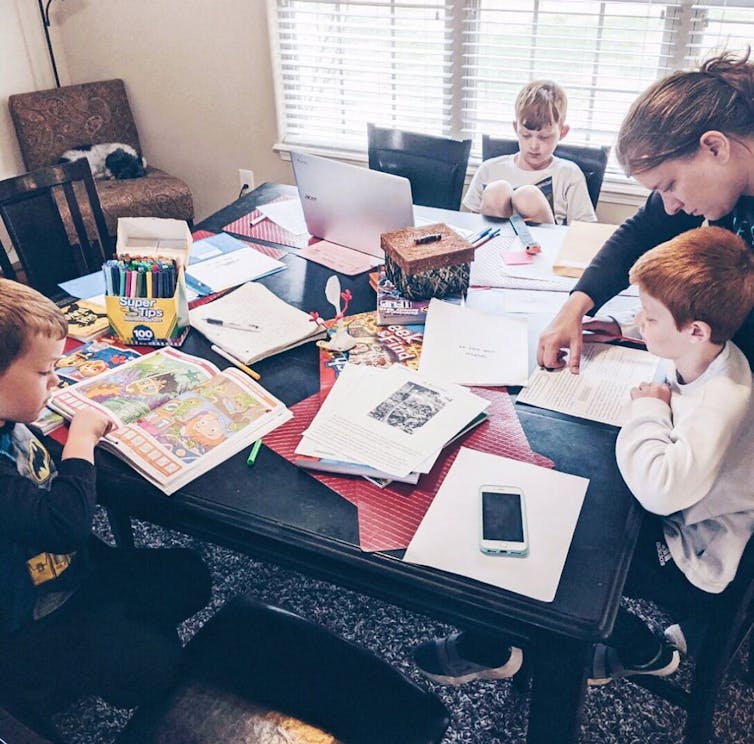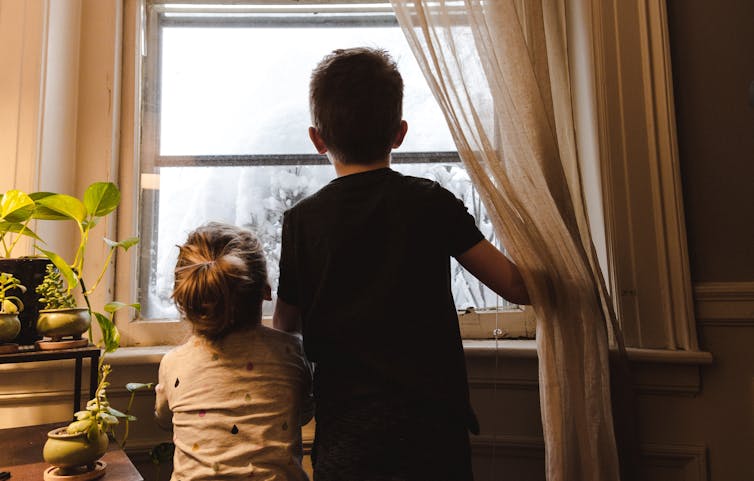
(Jessica Peresta/Instagram)
Marisa Young, McMaster University
Many working parents have been instructed to work from home.
Because of this forced or volunteer social distancing, many parents are now dealing with the new normal of having to work while parenting full time. Keep in mind, those who work remotely tend to be wealthier with bigger spaces. This quarantine can be extra challenging for multi-generational families, families living in close quarters and multi-family homes.
Others on the front line, including health-care workers, first responders, pharmacists, fire fighters, cashiers and store clerks, cleaners, truck drivers, etc. are unable to stay home with their kids. They are frantically searching for safe child-care options. And this is only the beginning of their struggles.
During last Sunday’s address to the country, it became evident to some listeners that even Canada’s Prime Minister Justin Trudeau has recently experienced similar challenges of balancing work with full-time parenting obligations. His wife, Sophie Grégoire Trudeau, tested positive for COVID-19 and went into isolation. With three young children and no child care or other domestic support, Trudeau got a glimpse into the challenges many parents are encountering daily.
Mental health consequences
During this outbreak, parents are suffering. They are dealing with one of the most consequential impacts on the psychological health of the modern-day workforce: work-family conflict.
This conflict has to do with the competing demands of paid work and family obligations. Additional workplace closures and social distancing practices will make it even harder for working parents over the next few months.

(Kelly Sikkema/Unsplash)
Parents will endure more than what might be psychologically manageable given their levels of work-family conflict during this crisis. These scenarios will likely be greatest amongst front-line workers. It is important to recognize the long term effects of these experiences: This type of chronic stress does not manifest itself immediately.
Instead, parents will eventually reach a breaking point. Think of their stress from an engineering standpoint. When a bridge collapses, it isn’t one vehicle that causes the collapse; it’s the constant strain endured by the bridge’s suspension that eventually leads to its downfall. A similar analogy can be used here.
Safe, affordable child care for all families
COVID-19 is uncovering an underlying problem regarding parents’ access to family-friendly community resources, including child care, education services and recreational facilities. Most susceptible are parents with young children who rely on the available resources of their local community to help with day-to-day child care and social support.
A recent study that I led highlights these issues. Parental health and well-being depends on resources from both the workplace, community and its supportive resources. The most important of these is safe affordable child care.
Even before the current coronavirus pandemic and its subsequent social isolation, the lack of access to such resources has been an ongoing challenge for parents, forcing them to make choices around child care they otherwise would not likely make.

(Sharon McCutcheon/Unsplash)
The problem extends to every corner of the country: 44 per cent of children in Canada live in child care deserts, neighbourhoods where there are more than 50 non-school aged children and less than one space for every three children of the same age. These statistics are disturbing and reveal the number of parents struggling to find sufficient child care. There are serious mental health consequences for those in under-resourced areas.
Government response
Canadian provincial and federal governments have been quick to respond to the child-care demand of front-line workers during the COVID-19 crisis. Several Canadian provinces have provided emergency child-care centres for those in need, limiting numbers and taking special precautions to adhere to social distancing protocols.

(Humphrey Muleba/Unsplash)
Trudeau’s government has also committed $2 million to supplement the Canadian Child Benefit for qualifying parents. The former efforts are formidable in their immediate impact. The latter’s, questionable. Federal funds can help replace lost wages and allow parents not to work while caring for their children during this time, but money cannot help parents hire caregivers while working from home, given social distancing and isolation measures.
Moving forward, we need to recognize the importance of community resources for parents in a post-COVID-19 world. At the provincial level, most funding cuts have targeted family and community facilities, as well as safe affordable child care options.
The provision of these resources might reduce work-family conflict — and therefore a prolific mental health risk — in the general population. We know that seven out of 10 parents experience this stressor daily. These numbers are likely growing with the COVID-19 pandemic.
These times are arduous for working parents and we need to make sure we take care of them in the long run as well as other vulnerable populations. The benefits of which we will observe in generations to come.![]()
Marisa Young, Associate Professor, Department of Sociology and Canadian Research Chair in Mental Health and Work-Life Transitions, McMaster University
This article is republished from The Conversation under a Creative Commons license. Read the original article.



